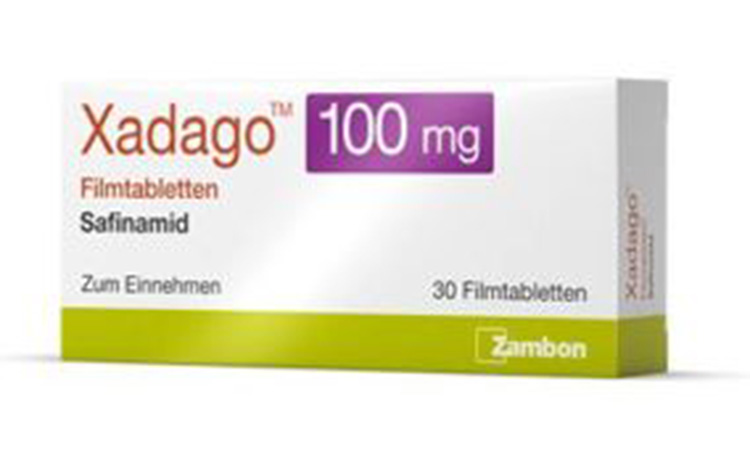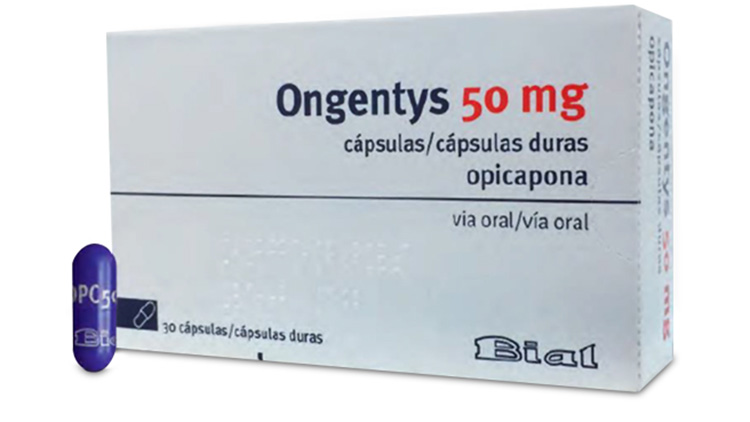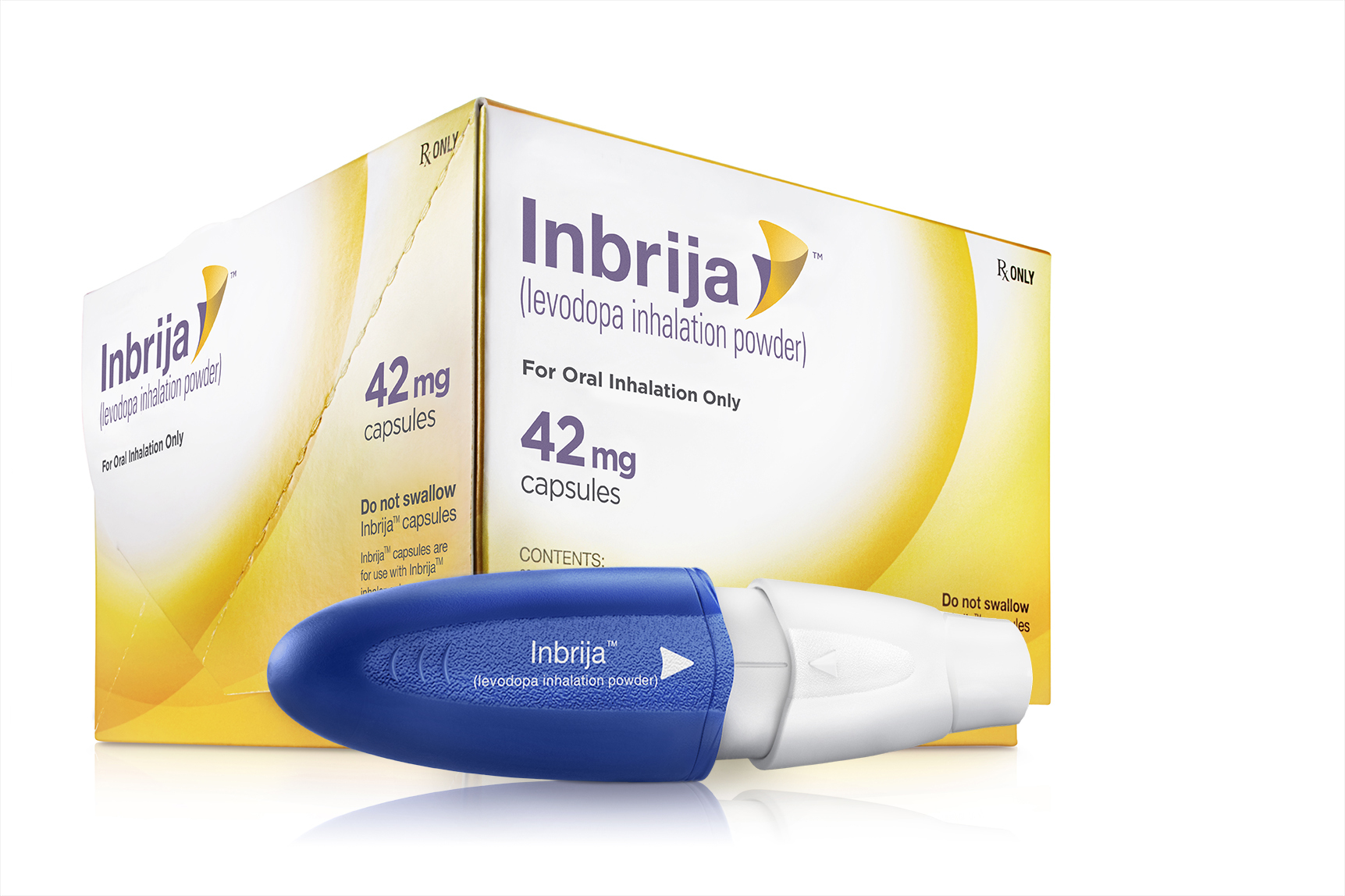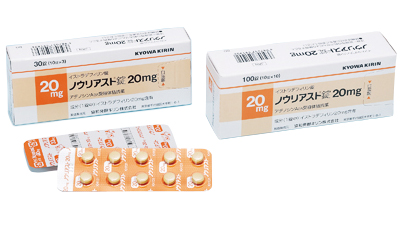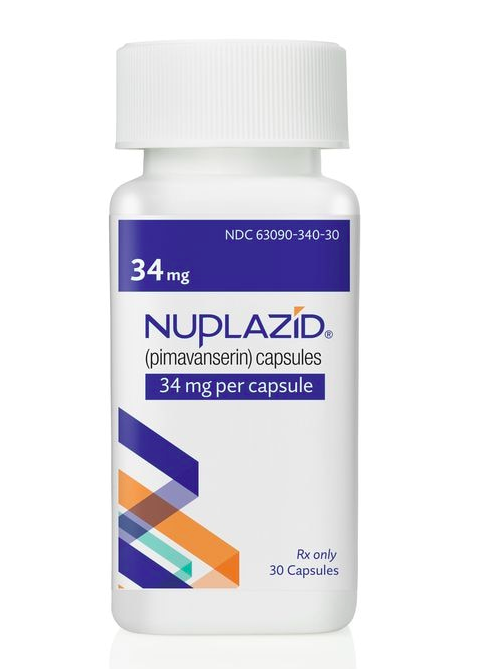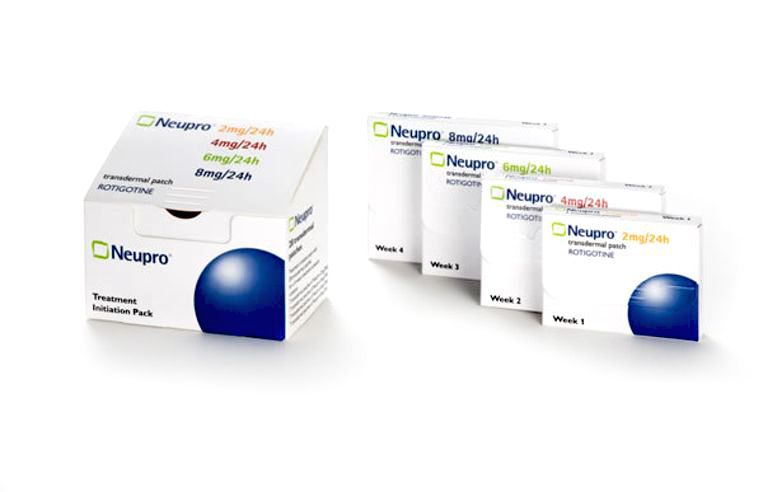New Parkinson's Disease treatments 2024
New Parkinson's Disease Treatments 2024
Parkinson's Disease (PD) is a progressive neurological disorder that primarily affects movement, often characterized by tremors, rigidity, slowness of movement (bradykinesia), and balance difficulties. The condition is caused by the degeneration of dopamine-producing neurons in a region of the brain called the substantia nigra, which leads to the hallmark symptoms of PD. Non-motor symptoms can also occur, including sleep disturbances, cognitive changes, and mood disorders. The exact cause of neuron degeneration in Parkinson's Disease is unknown, but it is thought to be a combination of genetic and environmental factors. Diagnosis is primarily clinical, based on medical history and neurological examination, as there is no definitive test for PD.
Treatment options for Parkinson's Disease are aimed at managing symptoms, as there is currently no cure. The cornerstone of medical treatment is dopamine replacement therapy, with levodopa being the most commonly prescribed medication, often combined with carbidopa to enhance its effectiveness and reduce side effects. Other medications include dopamine agonists, MAO-B inhibitors, and anticholinergics, which can be used alone or in combination to manage symptoms. Deep brain stimulation (DBS) surgery may be considered for patients with advanced PD or those who do not respond adequately to medication. It is important for patients to work closely with their healthcare provider to tailor a treatment plan that best manages their individual symptoms and lifestyle needs.

Treatment options
| Treatment option | Estimated cost | Efficacy | Eligibility |
|---|---|---|---|
| Levodopa/Carbidopa | $30 - $100 | Highly effective for symptomatic control | Most patients with Parkinson's Disease |
| Dopamine Agonists (e.g., pramipexole, ropinirole) | $30 - $200 | Moderately effective, may be used early in the disease | Patients with mild to moderate symptoms |
| MAO-B Inhibitors (e.g., selegiline, rasagiline) | $30 - $200 | Mild to moderate efficacy | Early-stage patients or as adjunct therapy |
| COMT Inhibitors (e.g., entacapone, tolcapone) | $200 - $400 | Mild to moderate efficacy | Patients experiencing "off" episodes |
| Amantadine | $50 - $150 | Mildly effective, also helps with dyskinesia | Patients with dyskinesia or mild symptoms |
| Deep Brain Stimulation (DBS) | $35,000 - $100,000 (initial surgery and device) | Highly effective for motor symptoms | Patients with advanced disease not controlled by medication |
| Xadago (safinamide) | $400 - $600 | Moderate efficacy as add-on therapy | Patients with "off" episodes on levodopa/carbidopa |
| Ongentys (opicapone) | $300 - $500 | Moderate efficacy as add-on therapy | Patients with "off" episodes on levodopa/carbidopa |
| Inbrija (levodopa inhalation powder) | $450 - $700 | Moderate efficacy for "off" episodes | Patients with "off" episodes on oral levodopa |
| Nourianz/Nouriast (istradefylline) | $400 - $600 | Mild to moderate efficacy as add-on therapy | Patients with "off" episodes on levodopa/carbidopa |
| Nuplazid (pimavanserin) | $2000 - $3000 | Moderate efficacy for Parkinson's disease psychosis | Patients with hallucinations and delusions associated with Parkinson's disease |
| Neupro (rotigotine transdermal system) | $600 - $800 | Moderate efficacy for symptom control | Patients with early-stage Parkinson's or as adjunct therapy |
| Experimental Gene Therapy (e.g., ProSavin, AXO-Lenti-PD) | Varies widely; typically not covered by insurance | Still under investigation; efficacy not established | Eligible patients in clinical trials |
| Stem Cell Therapy | Varies widely; typically not covered by insurance | Potential treatment, but efficacy and safety not yet established | Eligible patients in clinical trials or off-label use |
Treatments options in detail
Levodopa/Carbidopa (Sinemet)
Levodopa is the most effective and commonly prescribed medication for the treatment of Parkinson's Disease. It works by replenishing the brain's supply of dopamine, which is deficient in Parkinson's patients. Levodopa is often combined with another drug called carbidopa (Sinemet), which prevents levodopa from being converted into dopamine outside of the brain, thus increasing its effectiveness and reducing side effects such as nausea.
Dopamine Agonists
Dopamine agonists mimic the role of dopamine in the brain and include medications such as pramipexole (Mirapex), ropinirole (Requip), and the rotigotine patch (Neupro). These drugs can be used alone or in combination with levodopa. They are particularly useful in the early stages of the disease or for managing "off" periods when the effects of levodopa wear off before the next dose.
MAO-B Inhibitors
MAO-B inhibitors such as selegiline (Eldepryl, Zelapar) and rasagiline (Azilect) help prevent the breakdown of brain dopamine by inhibiting the monoamine oxidase B (MAO-B) enzyme. These medications can be used alone in early stages or in conjunction with levodopa as the disease progresses.
Catechol O-Methyltransferase (COMT) Inhibitors
COMT inhibitors, such as entacapone (Comtan) and tolcapone (Tasmar), are used to prolong the effect of levodopa by blocking an enzyme that breaks down dopamine. Entacapone is often combined with levodopa and carbidopa in a single pill (Stalevo).
Anticholinergics
Anticholinergic drugs like trihexyphenidyl and benztropine (Cogentin) have been used for many years to help control the tremor associated with Parkinson's disease. However, their use is limited by side effects, particularly in older patients, such as memory problems, confusion, hallucinations, constipation, dry mouth, and urinary retention.
Amantadine
Originally an antiviral drug, amantadine (Symmetrel) can provide short-term relief of mild, early-stage Parkinson's disease symptoms. It may also be added to carbidopa-levodopa therapy in later stages of Parkinson's disease to control involuntary movements (dyskinesias) induced by carbidopa-levodopa.
Xadago (Safinamide)
Xadago (safinamide) is a MAO-B inhibitor that is used as an add-on treatment to levodopa/carbidopa when symptoms are not adequately controlled by that treatment alone. It helps increase the levels of dopamine in the brain and may have additional effects on the glutamatergic and serotonergic systems.
Ongentys (Opicapone)
Ongentys (opicapone) is a COMT inhibitor that is used once daily as an adjunctive treatment to levodopa/carbidopa in patients with Parkinson's disease who are experiencing "off" episodes. It works by prolonging the effect of levodopa, thereby smoothing out motor fluctuations.
Inbrija (Levodopa Inhalation Powder)
Inbrija is an inhaled form of levodopa that is used for the intermittent treatment of "off" episodes in patients with Parkinson's disease who are currently taking carbidopa/levodopa. It provides a rapid relief of symptoms during an "off" episode.
Nourianz/Nouriast (Istradefylline)
Nourianz (known as Nouriast in Japan) is an adenosine A2A receptor antagonist that is used as an add-on treatment to levodopa/carbidopa in adult patients with Parkinson's disease experiencing "off" episodes. It works by modulating the adenosinergic system, which is thought to play a role in motor control.
Nuplazid (Pimavanserin)
Nuplazid (pimavanserin) is an atypical antipsychotic that is approved for the treatment of hallucinations and delusions associated with Parkinson's disease psychosis. Unlike traditional antipsychotics, it does not worsen the motor symptoms of Parkinson's disease, as it does not block dopamine receptors.
Neupro (Rotigotine Transdermal System)
Neupro is a transdermal patch that delivers the dopamine agonist rotigotine through the skin directly into the bloodstream. It provides a continuous delivery of medication over a 24-hour period, which can help manage the motor and non-motor symptoms of Parkinson's disease.
Experimental Treatments
There are several experimental treatments for Parkinson's disease that are not yet approved by the FDA. These include gene therapies aimed at delivering genes into the brain that can either improve dopamine synthesis or provide neuroprotective effects. Cell replacement therapies, which involve transplanting dopamine-producing cells into the brain, are also being investigated.
Another area of research is focused on medications that can slow down or halt the progression of Parkinson's disease, rather than just treating the symptoms. These potential disease-modifying therapies are a major focus of current Parkinson's research.
Additionally, repurposing drugs that are already approved for other conditions is an ongoing area of study. For example, drugs used to treat diabetes, such as exenatide, have been suggested to have neuroprotective effects and are being tested in clinical trials for Parkinson's disease.
Immunotherapy approaches that target the alpha-synuclein protein, which forms toxic clumps in the brains of people with Parkinson's, are also under investigation. These treatments aim to clear the protein aggregates or prevent their formation.
It is important to note that while these experimental treatments are promising, they require further research to determine their safety and efficacy in treating Parkinson's disease.
Off-Label Use of Medications
Some medications may be used off-label for the treatment of Parkinson's disease symptoms. Off-label drug use means that a medication that has been approved by the FDA for one purpose is used for a different purpose that has not been approved. A doctor can legally prescribe any medication they consider appropriate to treat a patient's condition.
For example, certain medications used to treat high blood pressure, such as isradipine, have been explored for their potential neuroprotective effects in Parkinson's disease. Similarly, antidepressants, such as selective serotonin reuptake inhibitors (SSRIs) or tricyclic antidepressants, are often used to treat depression in Parkinson's disease, although they are not specifically approved for this use.
It is crucial for patients to consult with their healthcare provider before starting any new medication, including off-label drugs, to understand the potential risks and benefits.
Symptoms
Motor Symptoms of Parkinson's Disease
Parkinson's Disease (PD) is characterized by a range of motor symptoms, the most common of which is bradykinesia, or the slowness of movement. This fundamental symptom often manifests as a reduced ability to initiate voluntary movements and can lead to difficulties with everyday tasks such as dressing, eating, and writing. Bradykinesia is often accompanied by a characteristic resting tremor, which typically begins in one hand and is described as a "pill-rolling" tremor due to its circular motion. While the tremor is a well-known sign of PD, not all individuals experience it.
Rigidity is another hallmark motor symptom, referring to stiffness and resistance to movement in the limbs and trunk. This symptom can contribute to a decreased range of motion and pain. Postural instability is also common, leading to impaired balance and coordination, which increases the risk of falls. PD patients may exhibit a stooped posture and a shuffling gait, which is characterized by small, shuffled steps and a reduced arm swing. Freezing of gait, where an individual temporarily feels as though their feet are glued to the floor, is another symptom that can occur.
Facial expressions may become less animated, a condition known as hypomimia or facial masking. This can affect social interactions, as facial expressions are a key component of nonverbal communication. Micrographia, or small, cramped handwriting, is another motor symptom that can develop as the disease progresses.
Non-Motor Symptoms of Parkinson's Disease
Non-motor symptoms are increasingly recognized as a significant aspect of PD and can sometimes precede the motor symptoms. These include a variety of issues such as cognitive impairment, which ranges from mild executive dysfunction to Parkinson's dementia. Mood disorders are also prevalent, with depression and anxiety affecting a substantial number of PD patients.
Sleep disturbances are common and can include insomnia, excessive daytime sleepiness, and REM sleep behavior disorder, where individuals act out their dreams. Autonomic dysfunction is another aspect of PD, leading to symptoms such as orthostatic hypotension, constipation, urinary incontinence or retention, and sexual dysfunction. Sensory symptoms, such as a reduced sense of smell (anosmia) and pain, can also be present.
Other non-motor symptoms include fatigue, which can be pervasive and significantly impact quality of life. Patients may also experience apathy, a lack of motivation or interest in daily activities. Psychotic symptoms, primarily hallucinations and delusions, can occur, particularly in the later stages of the disease or as a side effect of certain PD medications.
Progression and Variability of Symptoms
The progression of symptoms in PD can be highly variable among individuals. While some may experience a rapid progression, others may have a more gradual increase in symptoms over many years. The variability also extends to the type of symptoms experienced and their severity. For example, some individuals may have tremor-dominant PD, while others may have a form that is more characterized by bradykinesia and rigidity without significant tremor.
As the disease progresses, symptoms typically become more severe and can have a profound impact on the ability to perform daily activities. Advanced PD may lead to difficulties with speech and swallowing, which can increase the risk of aspiration and pneumonia. Cognitive changes may become more pronounced, and individuals may require assistance with personal care and mobility.
Impact on Daily Living
The symptoms of PD collectively impact daily living and quality of life. Motor symptoms can make it challenging to carry out fine motor tasks, such as buttoning clothes or using utensils, and can affect mobility and independence. Non-motor symptoms such as cognitive changes, mood disorders, and sleep disturbances can also significantly affect an individual's ability to engage in social and occupational activities.
It is important to note that while the symptoms described are characteristic of PD, the presentation and progression of the disease can vary widely. Each individual's experience with PD is unique, and the management of symptoms is tailored to the specific needs of each patient.
Conclusion
Parkinson's Disease presents with a complex array of motor and non-motor symptoms that evolve over time. The most common motor symptoms include bradykinesia, resting tremor, rigidity, and postural instability. Non-motor symptoms encompass cognitive impairment, mood disorders, sleep disturbances, autonomic dysfunction, and sensory changes. The variability in symptom presentation and progression underscores the need for individualized care and management strategies to improve the quality of life for those living with PD.
Cure
Current Status of Parkinson's Disease Cure
As of the latest medical research and evidence, there is no cure for Parkinson's Disease (PD). Parkinson's Disease is a progressive neurodegenerative disorder characterized by the loss of dopamine-producing neurons in the brain, particularly in a region called the substantia nigra. While there is no definitive cure, there are treatments available that can help manage the symptoms and improve the quality of life for those affected by the disease.
Treatment Approaches for Symptom Management
The primary treatment for Parkinson's Disease involves pharmacological management to replenish dopamine or mimic its action in the brain. The most common medication is levodopa (combined with carbidopa), which the brain converts into dopamine. Other medications include dopamine agonists, MAO-B inhibitors, and COMT inhibitors. These drugs can alleviate motor symptoms and improve mobility, but they do not halt the progression of the disease.
In addition to pharmacological treatments, non-pharmacological therapies such as physical therapy, occupational therapy, and speech therapy are integral to managing the disease. These therapies can help patients maintain their independence and improve their quality of life by addressing the physical and cognitive challenges posed by PD.
Advanced Therapies for Parkinson's Disease
For patients with advanced Parkinson's Disease or those who do not respond adequately to medication, surgical options such as Deep Brain Stimulation (DBS) may be considered. DBS involves the implantation of electrodes in specific areas of the brain, which deliver electrical impulses to regulate abnormal brain activity. While DBS can significantly reduce symptoms and decrease the need for medication, it is not a cure and carries risks associated with surgery.
Another advanced treatment is the infusion of levodopa-carbidopa intestinal gel (LCIG), which delivers medication directly to the small intestine, providing a more constant level of medication to help manage motor fluctuations.
Experimental Treatments and Research
Research into potential cures for Parkinson's Disease is ongoing, with several experimental treatments under investigation. These include gene therapy, which aims to introduce genetic material into the brain to improve dopamine production or protect dopamine-producing cells, and stem cell therapy, which seeks to replace lost neurons with new, healthy ones. However, these approaches are still in the experimental stages and are not widely available as standard treatments.
Another area of research focuses on neuroprotective agents that could potentially slow down or stop the progression of the disease. These agents aim to protect the neurons from damage or death. However, no neuroprotective therapies have been conclusively proven to alter the course of Parkinson's Disease in clinical trials to date.
Off-Label Use of Medications in Parkinson's Disease
Some medications approved for other conditions are sometimes used off-label for Parkinson's Disease. For instance, certain antidepressants or antipsychotics may be used to treat the non-motor symptoms of PD, such as depression and psychosis. The use of these medications is based on their pharmacological action, which may offer symptom relief, but they do not provide a cure for the underlying disease.
Lifestyle Modifications and Complementary Therapies
Lifestyle modifications, such as regular exercise and a healthy diet, are recommended for individuals with Parkinson's Disease. Exercise, in particular, has been shown to have benefits in improving gait, balance, and overall physical function. Complementary therapies such as yoga, tai chi, and mindfulness meditation may also provide symptomatic relief and improve well-being, but they do not cure the disease.
Conclusion on the Cure for Parkinson's Disease
In conclusion, while there is no cure for Parkinson's Disease at present, there are numerous treatment options available that can help manage the symptoms and improve the quality of life for those affected. Ongoing research continues to explore new potential treatments with the hope of finding a cure or at least a way to halt the progression of the disease. Patients with Parkinson's Disease should work closely with their healthcare providers to develop a comprehensive treatment plan tailored to their individual needs.
Access Parkinson's Disease medicines today
If Parkinson's Disease medicines are not approved or available in your country (e.g. due to supply issues), you can access them via Everyone.org.
How Everyone.org works

Make an enquiry
Choose the medicine you want to access, answer a couple of questions, and upload your prescription to speed things up. We’ll get back to you within 24 hours.


Make an enquiry
Choose the medicine you want to access, answer a couple of questions, and upload your prescription to speed things up. We’ll get back to you within 24 hours.


Breeze through the paperwork
We'll guide you through the required documents for importing unapproved medicine, ensuring you have all the necessary information.


Get a personalized quote
We’ll prepare a quote for you, including medicine costs and any shipping, administrative, or import fees that may apply.


Receive your medicine
Accept the quote and we’ll handle the rest - sourcing and safely delivering your medicine.

Some text on this page has been automatically generated. Speak to your physician before you start a new treatment or medication.
Let's talk
If you have any questions, call us or send us a message through WhatsApp or email:
Contact us

